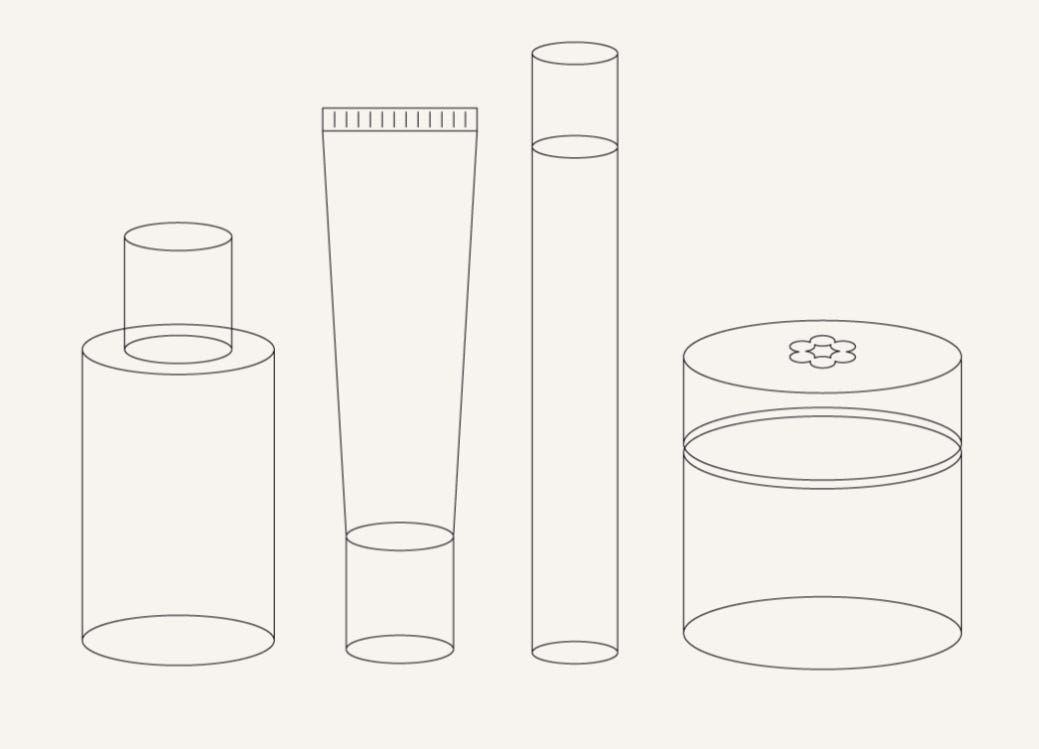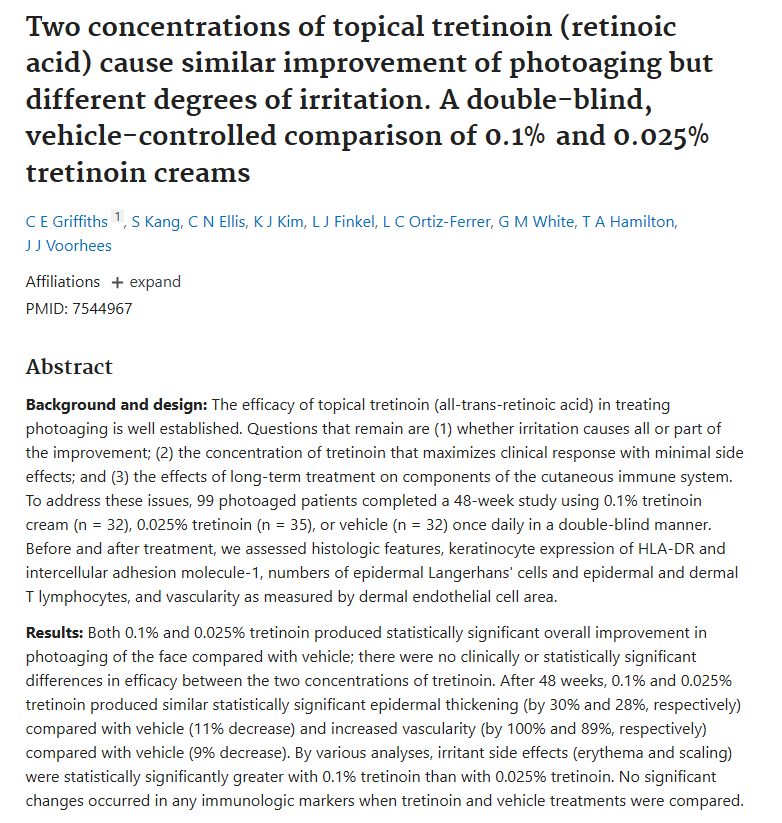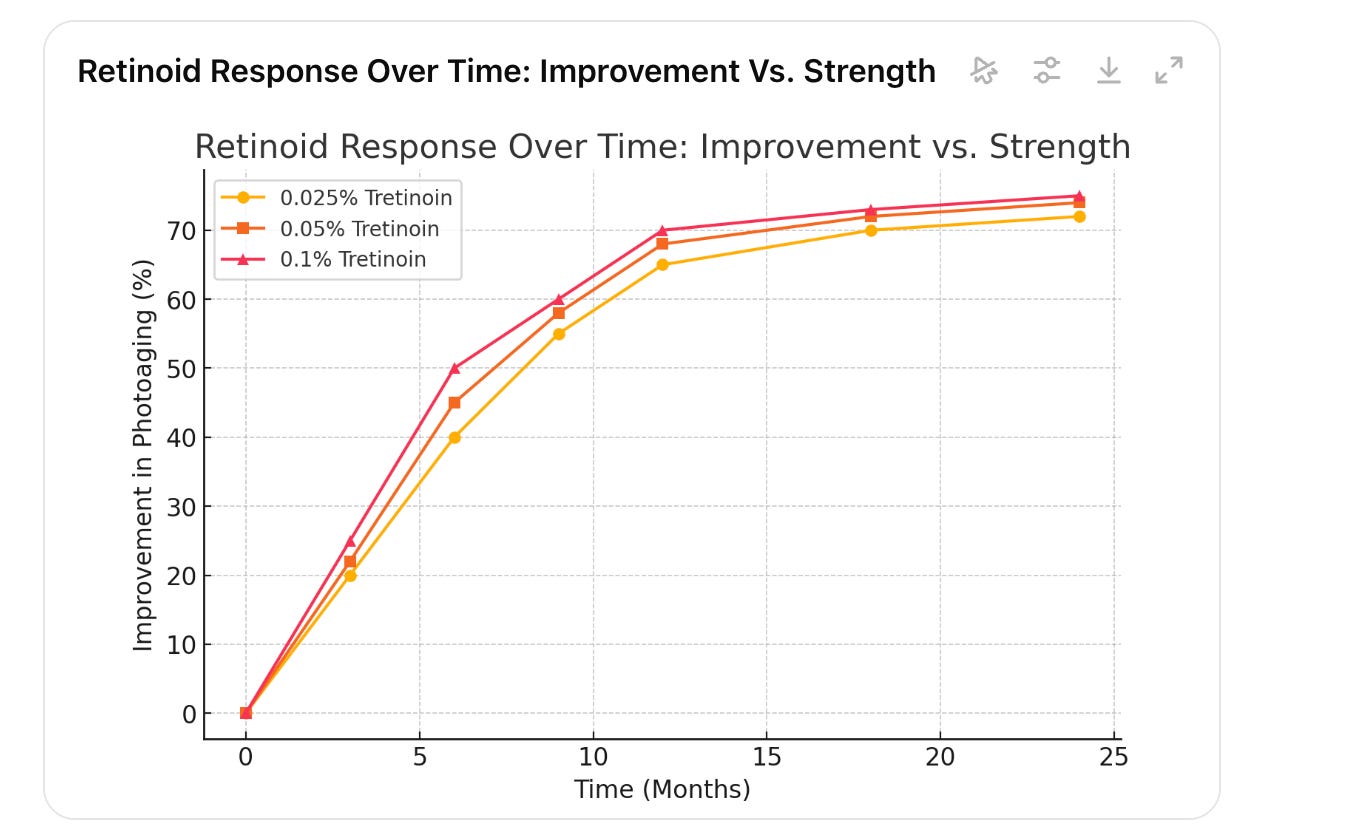The Retinoid Ladder — A Flawed System?
Do we really need 5 different strength retinoids?
The skincare industry has long conditioned us to think that more strength = better results. Remember when we saw brands roll out 30% acids and Vitamin C?
Traditionally, Vitamin A skincare (especially prescriptive skincare) follows a “ladder”. approach, starting with low-doses and moving to stronger ones as tolerance builds. Now brands are rolling out 0.1%, 0.3%, 0.5%, 1.0% (retinols) or 0.03%, 0.05%, 0.1% and 0.2% (retinals), and everything in between, guiding consumers through a "retinoid ladder". This is a gradual climb from mild to high-strength formulations. Dermatologists often follow suit (to be fair they did it originally with Pharmaceutical Drug suppliers), recommending this tiered approach to "build tolerance" before moving up.
But is this really the most effective and sustainable way to deliver retinoid benefits? Or are we simply selling more bottles under the illusion of progression?
The Science Says Otherwise
Let’s break it down with clinical evidence.
Higher Strengths Aren’t Always More Effective
A pivotal study comparing 0.05% tretinoin to 0.1% tretinoin found that while both delivered similar improvements in photoaging, the 0.1% concentration caused significantly more irritation. In other words, doubling the strength didn’t double the results, but it did increase barrier disruption. Now this is one study and I would love to see more in this space but unless this is financially backed, I don’t see the financial incentive in Pharmaceutical Tretinoin Companies or Brands (pushing the ladder approach) funding more in this space (Griffiths et al., 1995).Retinoid Response Plateaus Over Time
A long-term study on tretinoin in photoaging showed that most visible benefits occur within the first 6–12 months of consistent use, regardless of whether patients used 0.025%, 0.05%, or 0.1% tretinoin. Beyond this period, the improvement curve flattened, meaning a higher dose didn’t necessarily continue to yield greater benefits (Sitohang et al., 2022) (Baldwin et al., 2013).Barrier Damage Slows Progress
Stronger retinoids often lead to increased redness, dryness, and inflammation. This irritation can disrupt collagen-building processes, ironically working against the very benefits retinoids are meant to provide. Studies on retinoid-induced irritation confirm that excessive barrier compromise leads to discontinuation, inconsistent use, and ultimately, diminished results. (JAMA Dermatology)EU Regulations
EU regulators have seen the fast uptick in strong formulations and have already placed restrictions on the dose of retinol in formulations (face and body) in 2024 to control overuse in the market. This is 0.3% Retinol for the face and 0.5% for the body (EU Commission published amendment to the EU Cosmetics Regulation).
So instead of chasing higher strengths/ higher doses, what if we focused on smarter formulations, better delivery systems, and barrier-friendly routines?
A Smarter, More Sustainable Approach
I have spoken about this last year and again this year instead of pushing multiple strengths, we should be asking:
✔️ Can a single, well-formulated retinal or retinoid product be optimized for maximal effectiveness without the need to "ladder up"?
✔️ Do we need higher strengths, or do we need better delivery systems?
✔️ Could combining retinoids with acids, peptides, or other ingredients provide better penetration without resorting to unnecessary strength increases?
What Brands & Dermatologists Should Consider
Rather than focusing on multiple incremental strengths, the future of retinoids should prioritise:
Smart Formulation
Thinks encapsulation, stabilizers, and delivery systems that allow for deep penetration without requiring high percentages.
Barrier-Supportive Retinoids
Paired with ceramides, peptides, and anti-inflammatory ingredients to maintain skin resilience while optimizing efficacy.
Targeted Layering Strategies
Instead of stronger retinoids, pairing them strategically with exfoliating acids can increase penetration without added irritation.
Final Thoughts: Are We Selling More Bottles or Delivering Better Skincare (focusing on skin health)?
If 0.05% tretinoin delivers nearly the same results as 0.1% with less irritation, and if most skin improvement happens within a set adaptation period, do we really need five different strengths of retinoids?
Or are we making skincare unnecessarily complicated?
The industry thrives on creating upgrades and progressions but real skin progress comes from consistency, formulation intelligence, and sustainability.
You know my personal approach. I don't think the future of retinoids lies in this ladder system. In fact, over the next few years or decade, we’ll see brands/maybe pharmaceuticals starting to streamline their offerings, cutting back on excess. But only after they’ve maximised the hype they created around higher strengths. Will it happen now? No. Because as someone once told me ‘you’re only as good as the trend.’"
Would love to hear your thoughts should we rethink the way we structure retinoid offerings?
Here's to ever-evolving skin and self! With Love,
Farah xxx
References:




